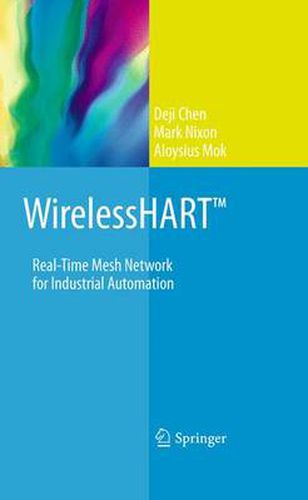Readings Newsletter
Become a Readings Member to make your shopping experience even easier.
Sign in or sign up for free!
You’re not far away from qualifying for FREE standard shipping within Australia
You’ve qualified for FREE standard shipping within Australia
The cart is loading…






This title is printed to order. This book may have been self-published. If so, we cannot guarantee the quality of the content. In the main most books will have gone through the editing process however some may not. We therefore suggest that you be aware of this before ordering this book. If in doubt check either the author or publisher’s details as we are unable to accept any returns unless they are faulty. Please contact us if you have any questions.
The process control industry has seen generations of technology advancement, from pneumatic communication to electrical communication to electronic c- munication, from centralized control to distributed control. At the center of today’s distributed control systems are operator workstations. These operator wo- stations provide the connection between those overseeing and running plant operations to the process itself. With each new generation of products the operator workstation has become increasingly more intelligent. Newer applications provide advanced alarming, control, and diagnostics. Behind all of these applications are smarter devices. These smart devices provide greater process insight, reduce en- neering costs, and contribute to improving the overall operational performance of the plant. Smart devices include advanced diagnostics that can report the health of the device and in many cases, the health of the process that the device is connected to. It is not uncommon for smart devices to include diagnostics that can detect plugged lines, burner flame instability, agitator loss, wet gas, orifice wear, leaks, and cavitations. These devices tell the user how well they are operating and when they need maintenance. Improvements in sensor technology and diagnostics have lead to a large variety of smart devices. So how do users connect the capabilities of these smart devices to their existing control system infrastructures? The answer is wireless. Wireless technology has matured to the point that it now can be safely applied in industrial control, monitor, and asset management applications.
$9.00 standard shipping within Australia
FREE standard shipping within Australia for orders over $100.00
Express & International shipping calculated at checkout
This title is printed to order. This book may have been self-published. If so, we cannot guarantee the quality of the content. In the main most books will have gone through the editing process however some may not. We therefore suggest that you be aware of this before ordering this book. If in doubt check either the author or publisher’s details as we are unable to accept any returns unless they are faulty. Please contact us if you have any questions.
The process control industry has seen generations of technology advancement, from pneumatic communication to electrical communication to electronic c- munication, from centralized control to distributed control. At the center of today’s distributed control systems are operator workstations. These operator wo- stations provide the connection between those overseeing and running plant operations to the process itself. With each new generation of products the operator workstation has become increasingly more intelligent. Newer applications provide advanced alarming, control, and diagnostics. Behind all of these applications are smarter devices. These smart devices provide greater process insight, reduce en- neering costs, and contribute to improving the overall operational performance of the plant. Smart devices include advanced diagnostics that can report the health of the device and in many cases, the health of the process that the device is connected to. It is not uncommon for smart devices to include diagnostics that can detect plugged lines, burner flame instability, agitator loss, wet gas, orifice wear, leaks, and cavitations. These devices tell the user how well they are operating and when they need maintenance. Improvements in sensor technology and diagnostics have lead to a large variety of smart devices. So how do users connect the capabilities of these smart devices to their existing control system infrastructures? The answer is wireless. Wireless technology has matured to the point that it now can be safely applied in industrial control, monitor, and asset management applications.